PROTECT YOUR DNA WITH QUANTUM TECHNOLOGY
Orgo-Life the new way to the future Advertising by AdpathwayThere is no doubt about it, avocados are popular. With some amazing nutritional benefits and that famously creamy texture, there just is no substitute for this tasty fruit. The trees, however, are tropical and grow in a relatively limited range.
If you don’t live in a warm climate, you’ve probably been stuck paying top dollar for your avocados at the supermarket. If this is your plight, I have some excellent news for you! There are varieties of avocado that you can grow in a pot or container, even in cool climates.
Growing an avocado tree in a pot or container allows you to bring it indoors for the winter. Since these trees are not especially cold-tolerant, they won’t survive the winter in many parts of the country. Planting yours in a container will make all the difference if you live north of zone 9. Here’s how to do it!

Avocado Overview
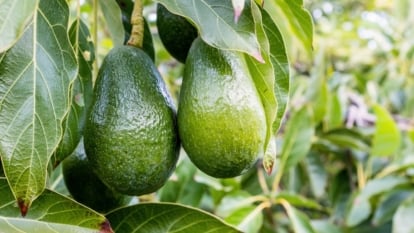
|
Plant Type Evergreen Tree Family Lauraceae Genus Persea Species Americana |
Native Area Central America Exposure Full sun to partial shade Height 8’-80’ Watering Requirements Moderate to high |
Pests & Diseases Thrips, scale, spider mites, persea mites, root rot, anthracnose, Phytophthora canker Maintenance Moderate Soil Type Rich, well-draining, slightly acidic (6.0-6.5) Hardiness Zone 9-12 |
What Are Avocado Trees?
 They’re not a fan of cold weather and may die outdoors in cold climates.
They’re not a fan of cold weather and may die outdoors in cold climates.Avocado trees are multi-branched evergreens that love warm, humid weather and lots of sunshine. As a result, they can be a challenge to grow in cool climates and indoors. However, some excellent dwarf varieties will thrive in a large container. Let’s talk about these trees and how to keep them healthy in a pot.
Characteristics
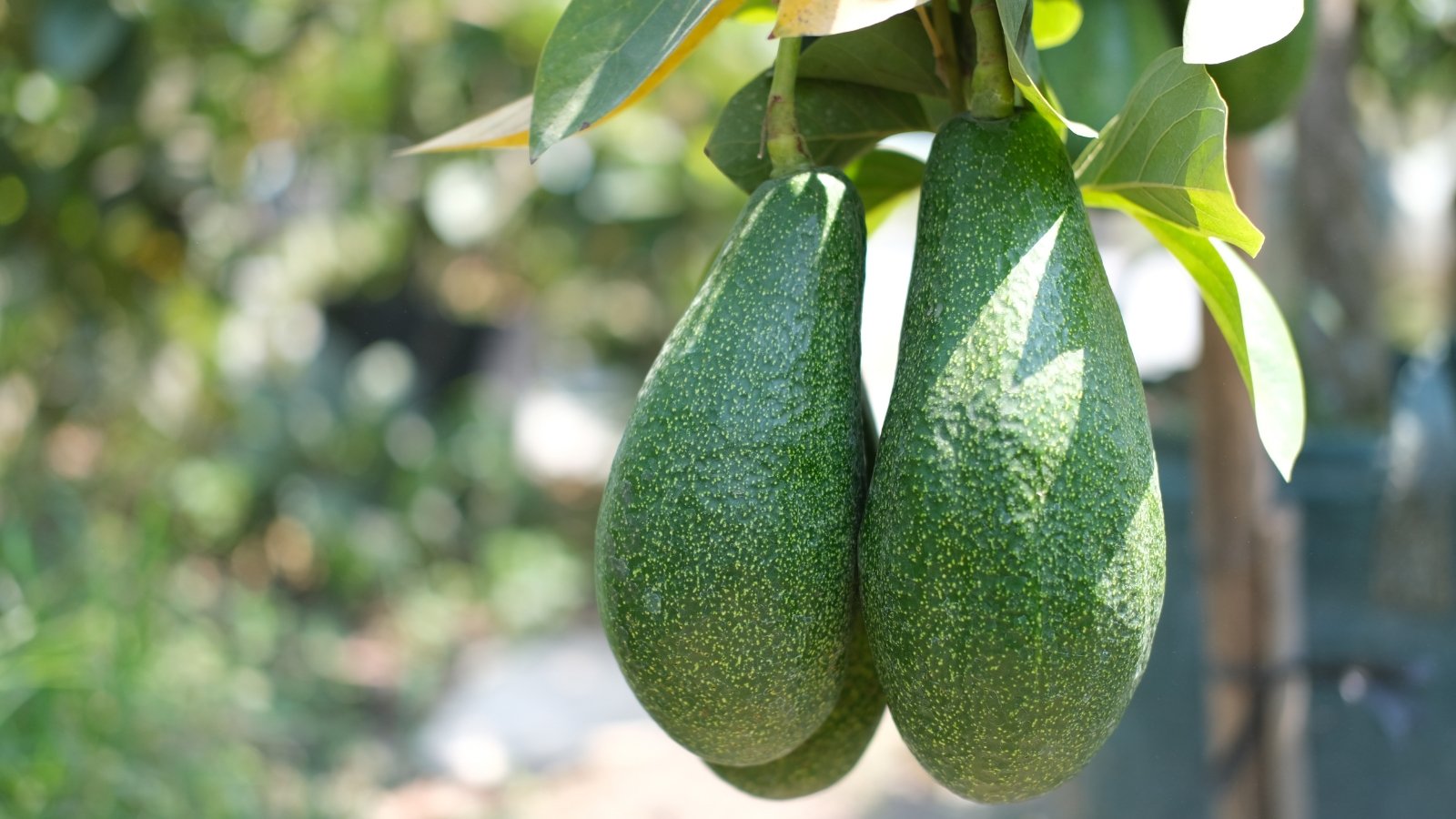 These trees grow slowly and steadily, but reward patience with fruit.
These trees grow slowly and steadily, but reward patience with fruit.When discussing growing an avocado tree in a pot or container, we will primarily focus on dwarf varieties. A standard-sized tree can reach anywhere from 20 to 80 feet tall at maturity, so naturally, these are tough to bring in for the winter. Dwarf varieties often stay between eight and 12 feet tall, and you can keep them even shorter by pruning properly.
Dwarf avocado trees are slower growing and have a dense, bushy form compared to most standard trees. A grafted cultivar can produce fruit in about two to four years, and the fruits are comparable in size and quality to a standard. They are slower growing and ideal for urban gardeners or anyone with limited space.
Native Area
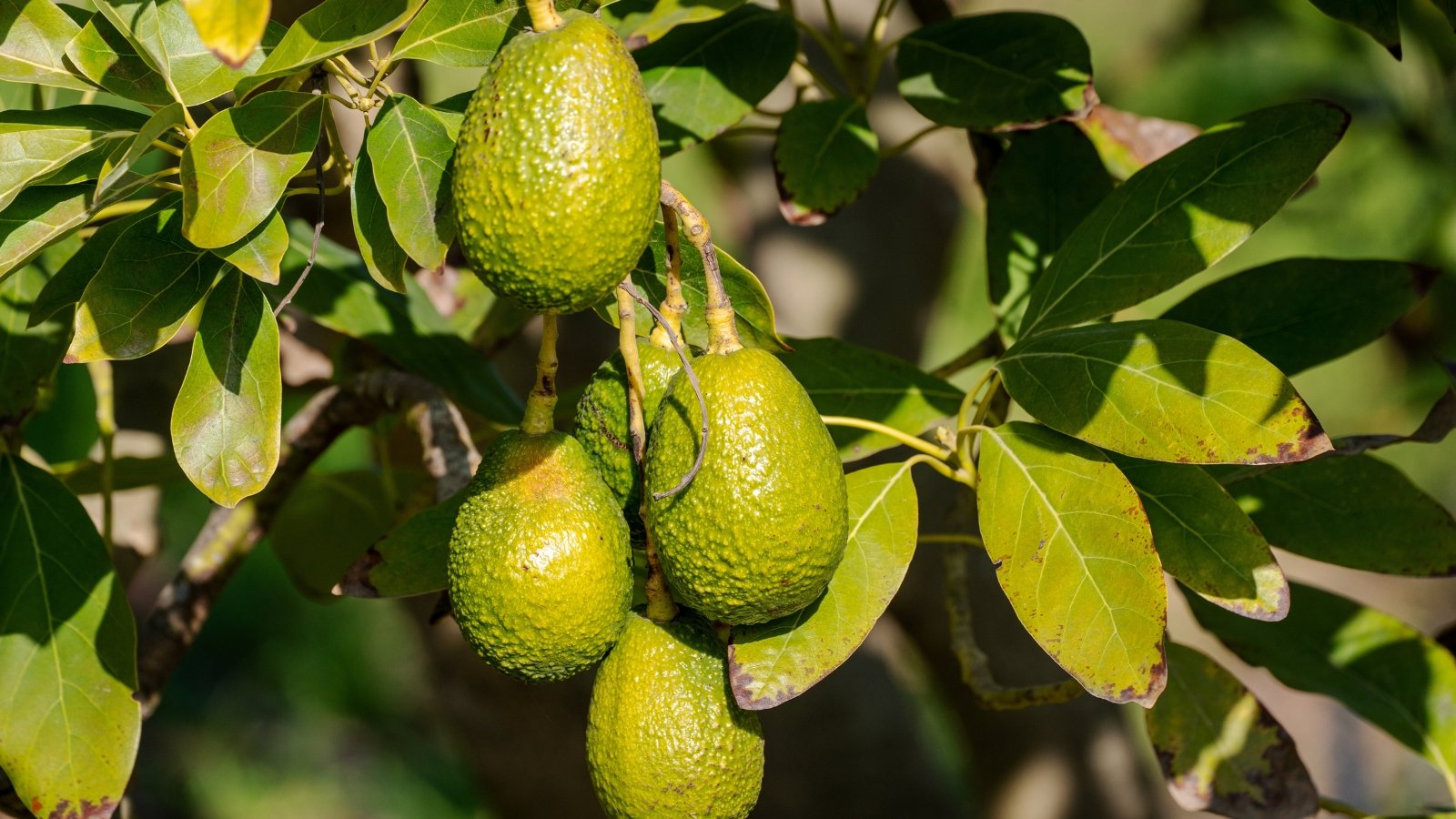 They prefer warm hillsides kissed by gentle tropical sun.
They prefer warm hillsides kissed by gentle tropical sun.Avocado trees are native to the southern part of Central America. Their range spans from the eastern highlands of central Mexico, down through Guatemala, and into some parts of South America. They appear in tropical and subtropical mountainous regions at elevations up to 6,600 feet.
Planting
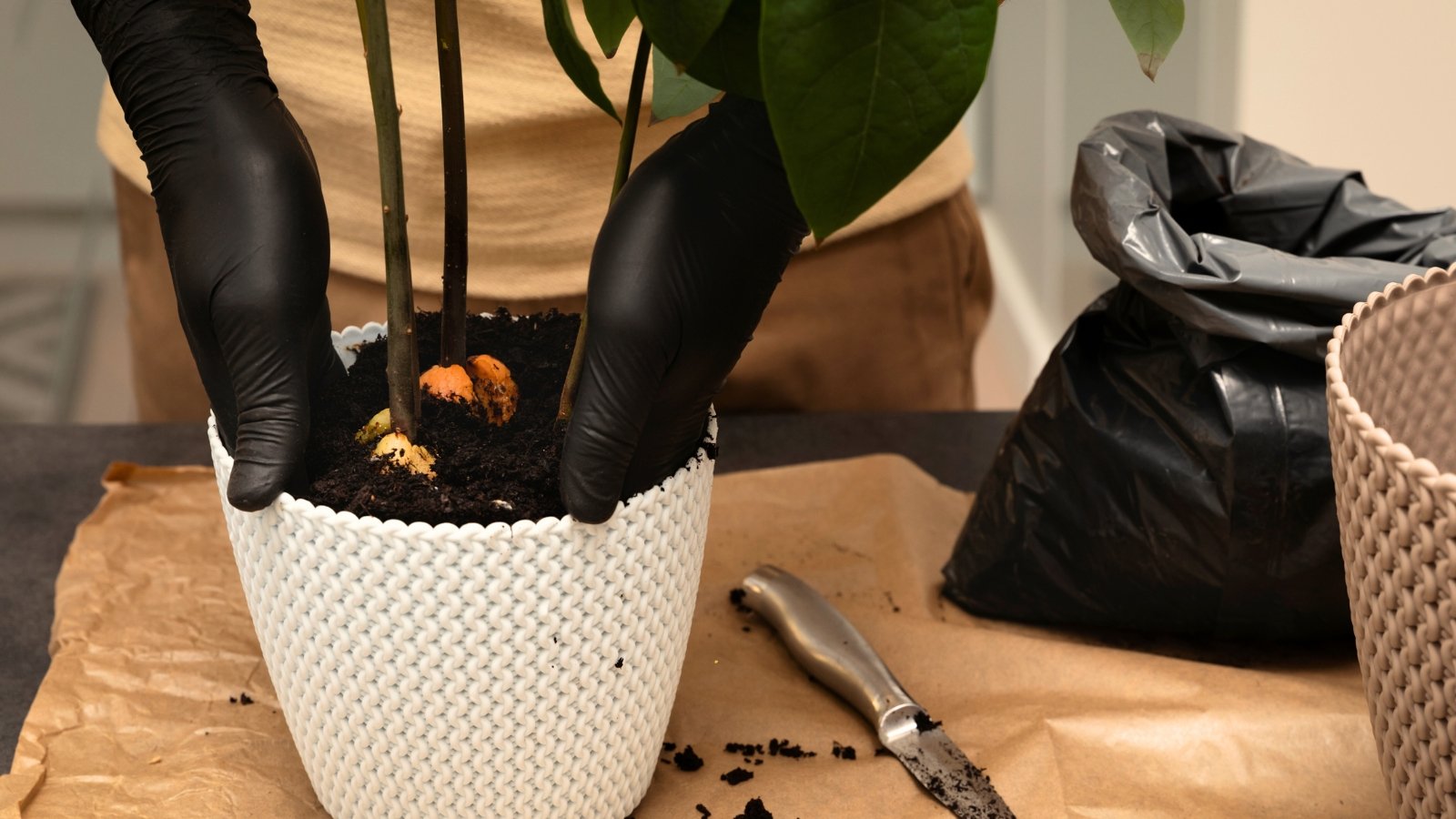 Shallow roots prefer roomy containers to spread out nicely.
Shallow roots prefer roomy containers to spread out nicely.Since we are discussing growing avocado trees in containers or pots, we won’t delve into the specific time of year. You can purchase and repot your tree at any time of year, as long as you provide it with proper care, including limiting exposure to cold temperatures. Choose a large container, as large as possible, to contain the extensive root system.
A wide pot is going to be more effective than a deep one. These trees have shallow, fibrous, and extensive root systems that don’t extend deeply into the earth. Most of the root system will be in the top several inches of soil.
For a young tree, choose a pot that is at least 12″-15″ in diameter. A mature tree will thrive best in a container that holds 20-25 gallons, so plan for that when you decide where it will live during the colder months.
How to Grow
They aren’t difficult to grow in general, but in a pot or container, avocado trees will do best with consistent care. They don’t need much, but their needs are relatively specific, making the difference between a healthy tree and one that fails to thrive.
Light
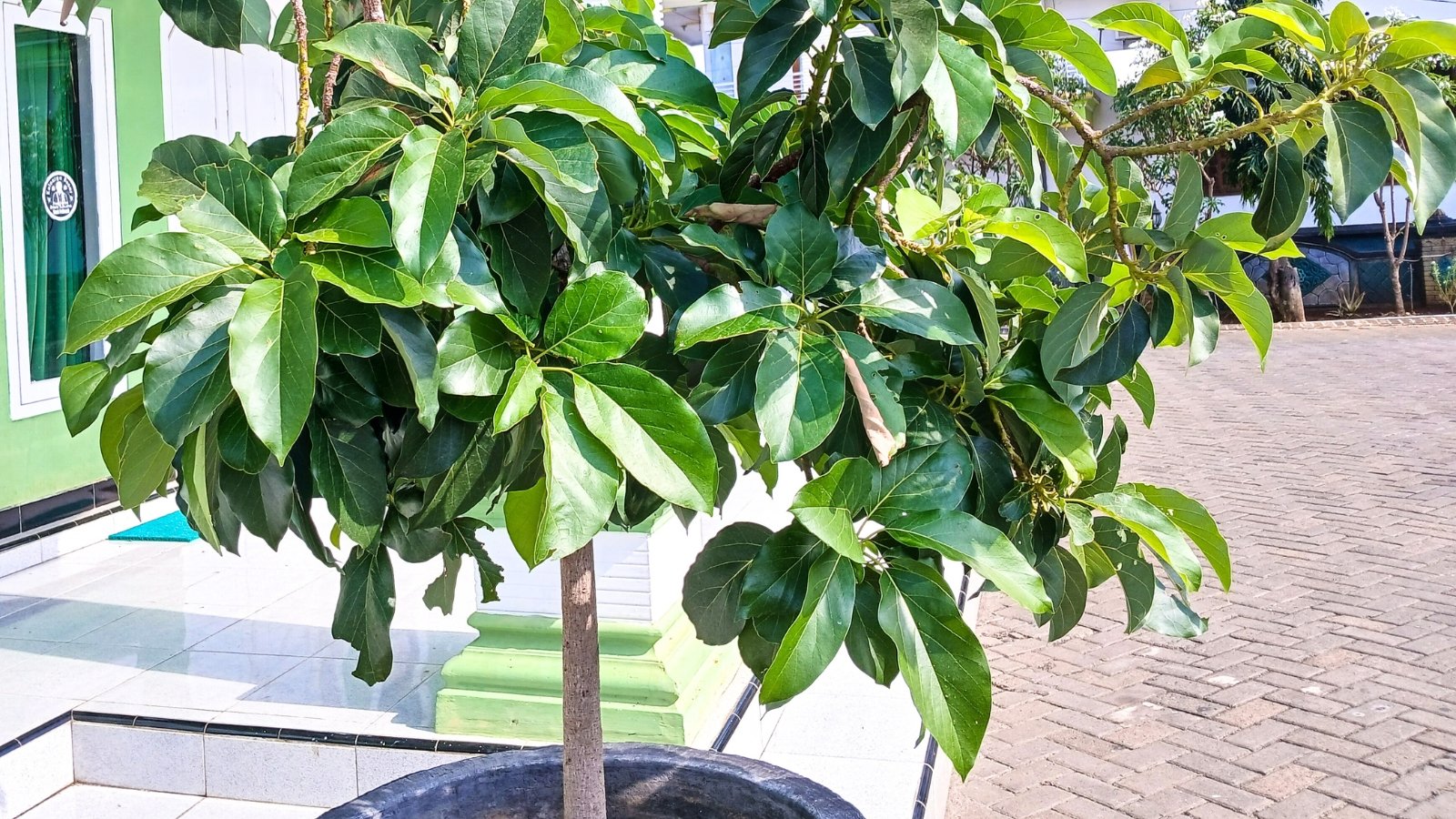 Plenty of light means better chances for juicy fruit later.
Plenty of light means better chances for juicy fruit later.Dwarf avocado trees need a good deal of bright, direct sunlight to grow well and eventually produce fruit. It can be challenging to provide the right amount of light inside the home, so for most of the year, I recommend growing your tree outdoors.
If you do intend to keep your tree indoors, place it next to the sunniest window possible. Preferably a south or west-facing window. If this is not available, you can use a full-spectrum grow light for at least ten hours each day.
Water
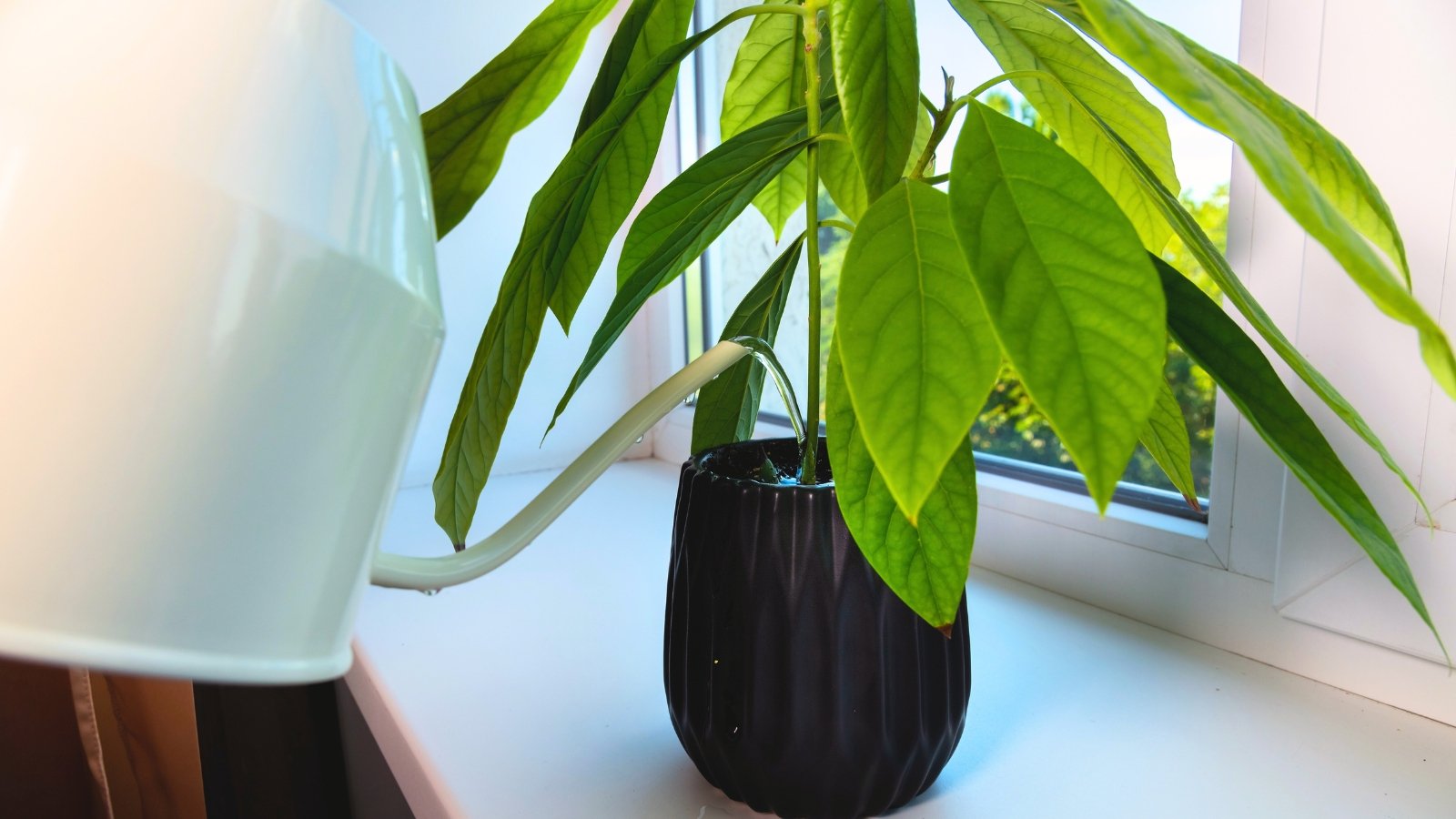 Let the soil dry a bit before giving water again.
Let the soil dry a bit before giving water again.For potted avocado trees, you must strike the right moisture balance inside the container. Much of it will depend on the size of the tree, the size of the container, and the weather conditions. Warm weather will cause the soil to dry faster, so in the summer, you’ll need to water more frequently.
For the period when your tree is indoors, it’s essential to monitor the soil. Consistently wet or soggy soil can lead to fungal diseases, particularly root rot. Allow the soil surface to dry between waterings, and you should be fine. Just don’t allow it to dry completely, as they do need a steady supply of moisture.
Soil
 Nutrient-rich soil gives a solid start for strong growth.
Nutrient-rich soil gives a solid start for strong growth.Due to their significant watering needs, drainage is the most crucial factor when it comes to soil. Your soil must have excellent drainage to avoid issues with root rot. Add perlite or pumice to keep it light, fluffy, and properly aerated.
The second important factor is nutrient content. Avocado trees are heavy feeders that require a generous supply of nutrients to produce healthy fruit. You’re limited with a potted tree in terms of the amount of soil it has access to, so make sure to start with rich soil.
Amend your potting mix with a generous amount of compost, and incorporate a balanced organic fertilizer to give it a strong start. The pH should be slightly acidic, but adding in some organic matter should take care of that.
Temperature and Humidity
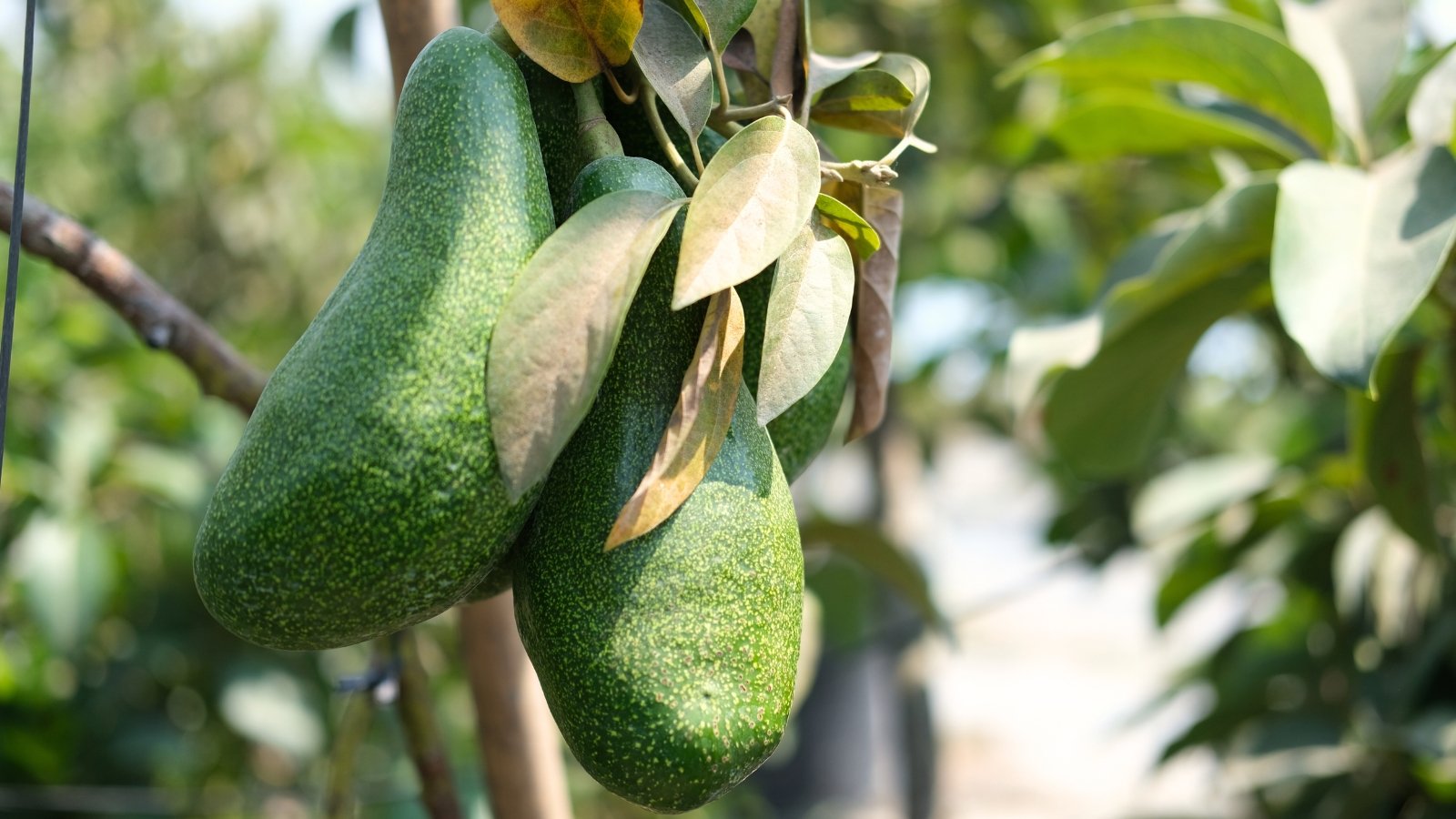 Warm, humid air keeps leaves happy and fruit developing well.
Warm, humid air keeps leaves happy and fruit developing well.Avocado trees thrive in warm, subtropical to tropical climates. Both temperature and humidity play important roles in their growth and fruit production. The ideal temperature range for your tree’s growth is between 60 and 85°F (16-29°C). They can tolerate periods of higher heat, but it’s vital to keep them well-watered during these times.
In terms of cold tolerance, their tolerance varies by variety. Hass avocados are not exceptionally tolerant of freezing, and temperatures below 30°F (-1°C) will cause damage. Mexican types tend to be more cold-hardy and can tolerate dips into the low 20s (around -4 to -7°C).
They need moderate to high humidity for proper flower development and pollination. Low humidity paired with high temperatures can even lead to leaf scorch and fruit drop. A humidity range of 50-70% is typically ideal for these trees.
Fertilizing
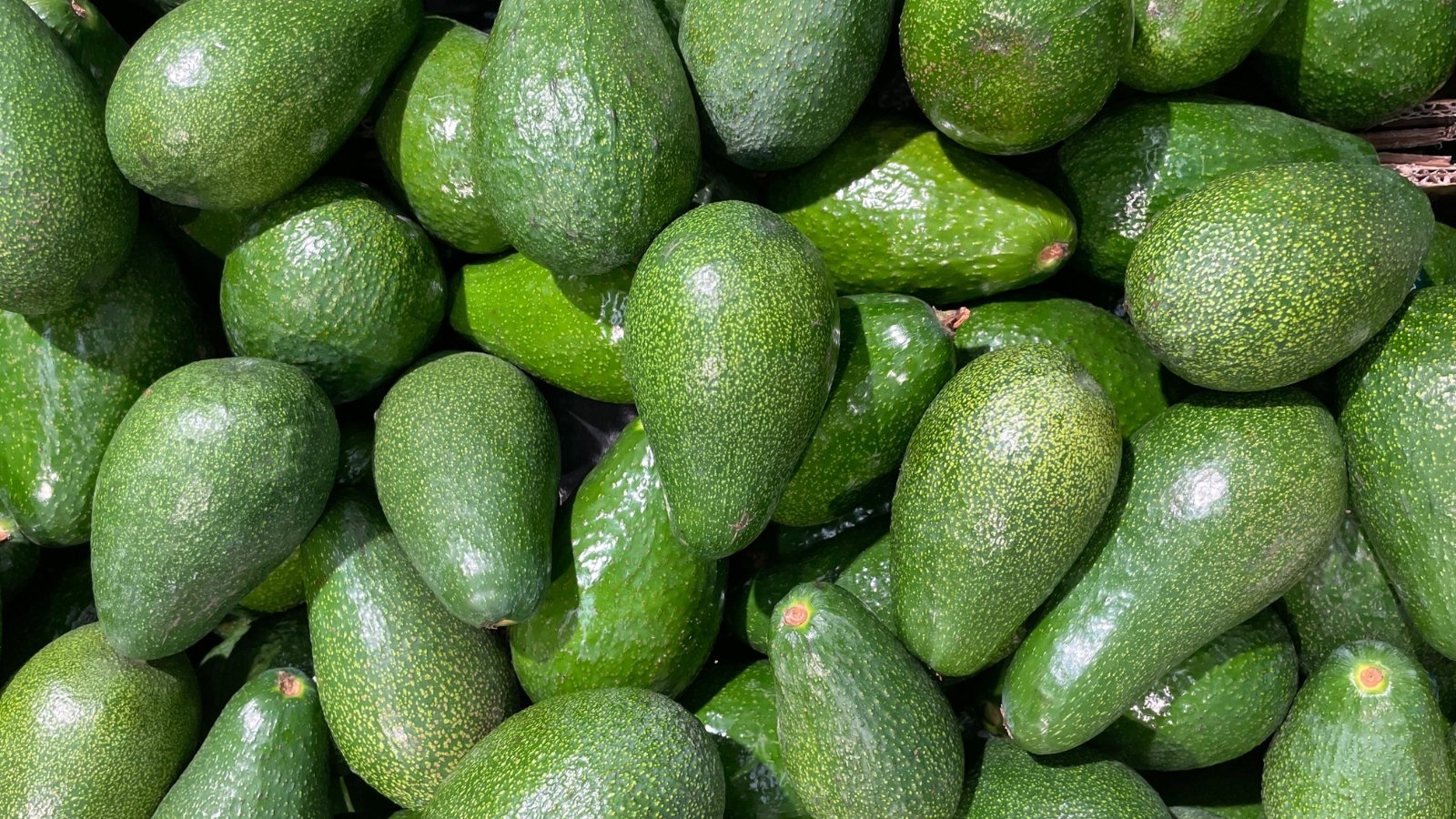 A good citrus fertilizer makes feeding simple and effective.
A good citrus fertilizer makes feeding simple and effective.Fertilizing a potted avocado tree is essential for healthy development. It’s especially important for potted plants, as nutrients can quickly wash out of the container soil with frequent watering. Use a balanced formula, such as a 10-10-10 or a similar ratio.
For the first year, fertilize your tree every four to six weeks during the growing season, which spans from early spring through early fall. As your tree ages, you can reduce the frequency to once every six to eight weeks. For potted trees kept indoors in the winter, continue to fertilize, as they will continue to grow.
Avocado trees need a lot of nitrogen, and they also require significant amounts of zinc, iron, and magnesium. For this reason, a citrus fertilizer is a suitable choice if you prefer to use a single fertilizer.
Maintenance
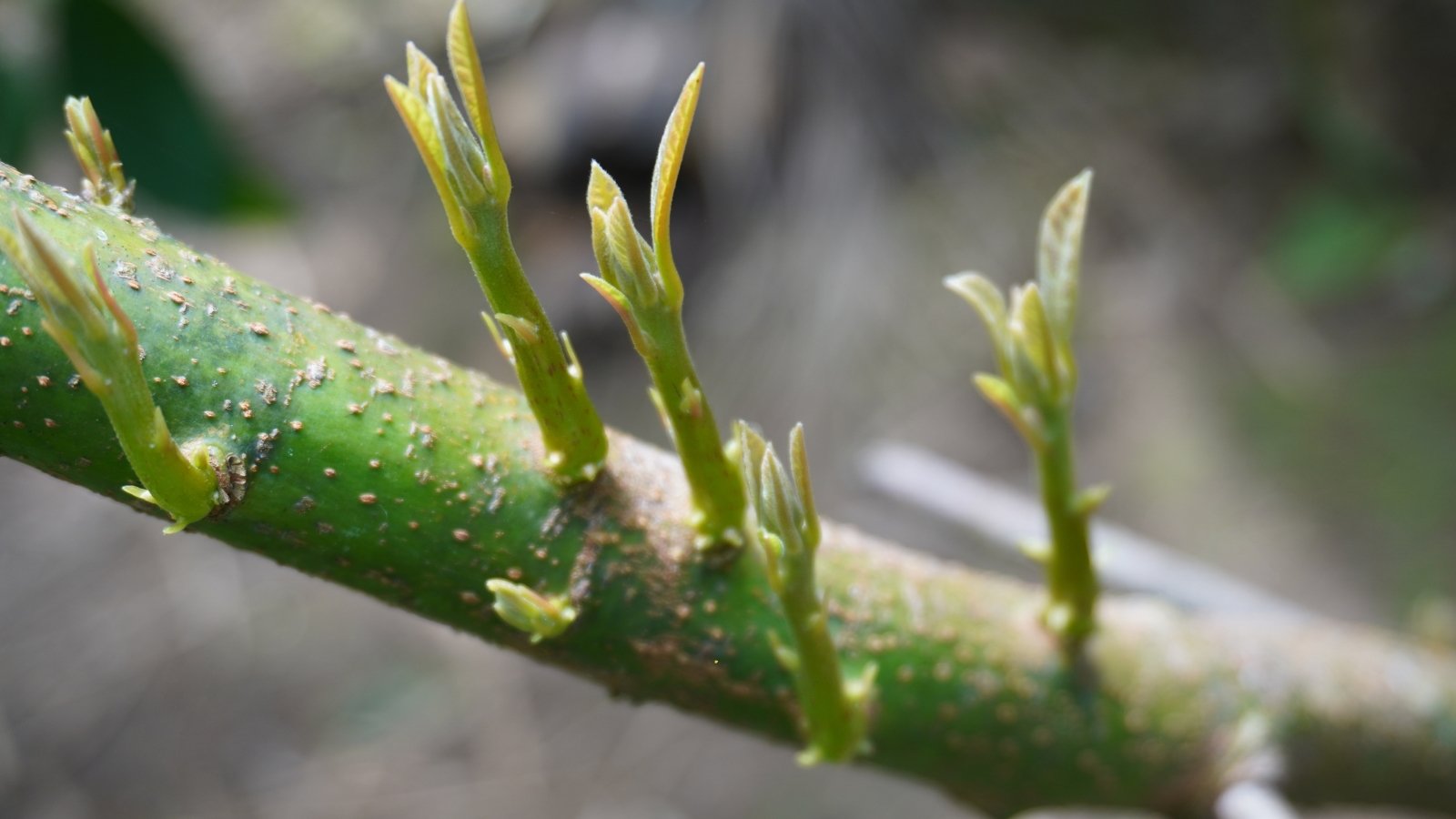 Topping new growth encourages a fuller, bushier tree shape.
Topping new growth encourages a fuller, bushier tree shape.Pruning your avocado tree is essential for maintaining its compactness, health, and productivity, resulting in a tree that bears a plentiful harvest of fruit. The ideal time to prune is in late winter or early spring, just before new growth begins. Aim for an open, rounded canopy, as this allows air and light to reach all parts of the foliage.
Remove waterspouts and vertical shoots, as they promote vertical growth. You want your tree to stay on the shorter side, so encourage horizontal branching. Tip all the new shoots, just removing an inch or two from the ends. Aim to keep your potted tree between six and eight feet tall.
Propagation
The most common method for propagating an avocado tree is through grafted cuttings. You can grow one from seed, and we will talk about how. However, this won’t always breed true to the parent plant. In other words, a hybrid tree might revert to the parent characteristics if you grow it from seed. Grafting produces a clone of the parent tree.
Seed
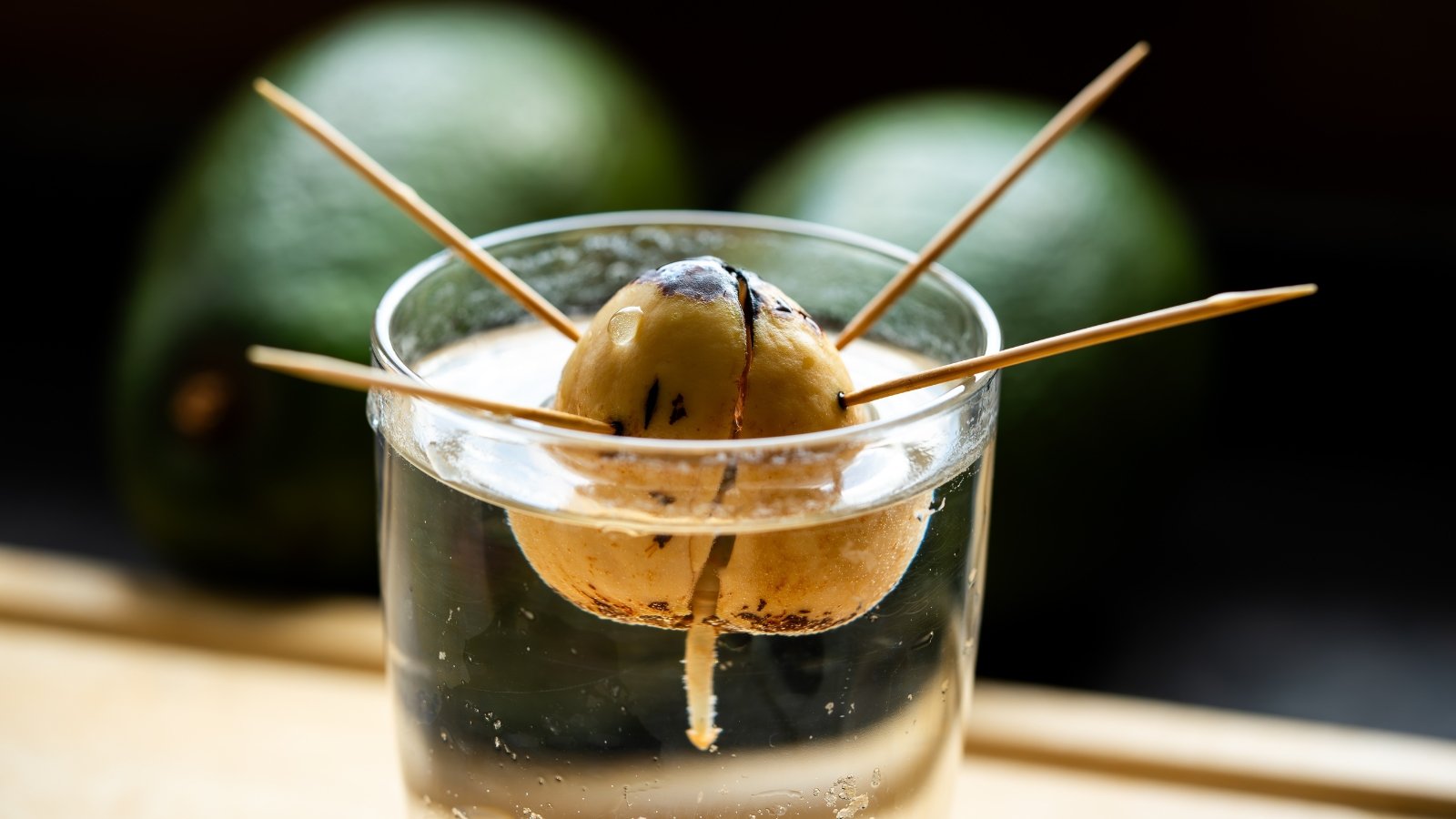 Toothpicks hold the seed just right for water soaking.
Toothpicks hold the seed just right for water soaking.To propagate from seed, you’ll need an avocado, some toothpicks, a cup of water, a nursery pot, and some rich, well-draining potting mix. It will take five to ten years for your tree to bear fruit this way.
- Remove the pit from the avocado and rinse it clean. Allow it to dry to make it less slippery for the next step.
- Insert three to four toothpicks into the pit, all the way around the middle. It should look like spokes on a wheel.
- Fill your cup with water and suspend the pit with the more pointed part facing up. You want to submerge it about halfway.
- Place the cup in a warm, brightly lit spot. No direct sun.
- Over the next two to six weeks, the seed should split. A root will grow from the bottom, and a shoot from the top.
- When the stem is about six inches tall and the root is well-developed, transplant into your pot with soil.
- Place your young tree in partial sun for the first few weeks, then gradually acclimate it to full sun.
Cutting/Grafting
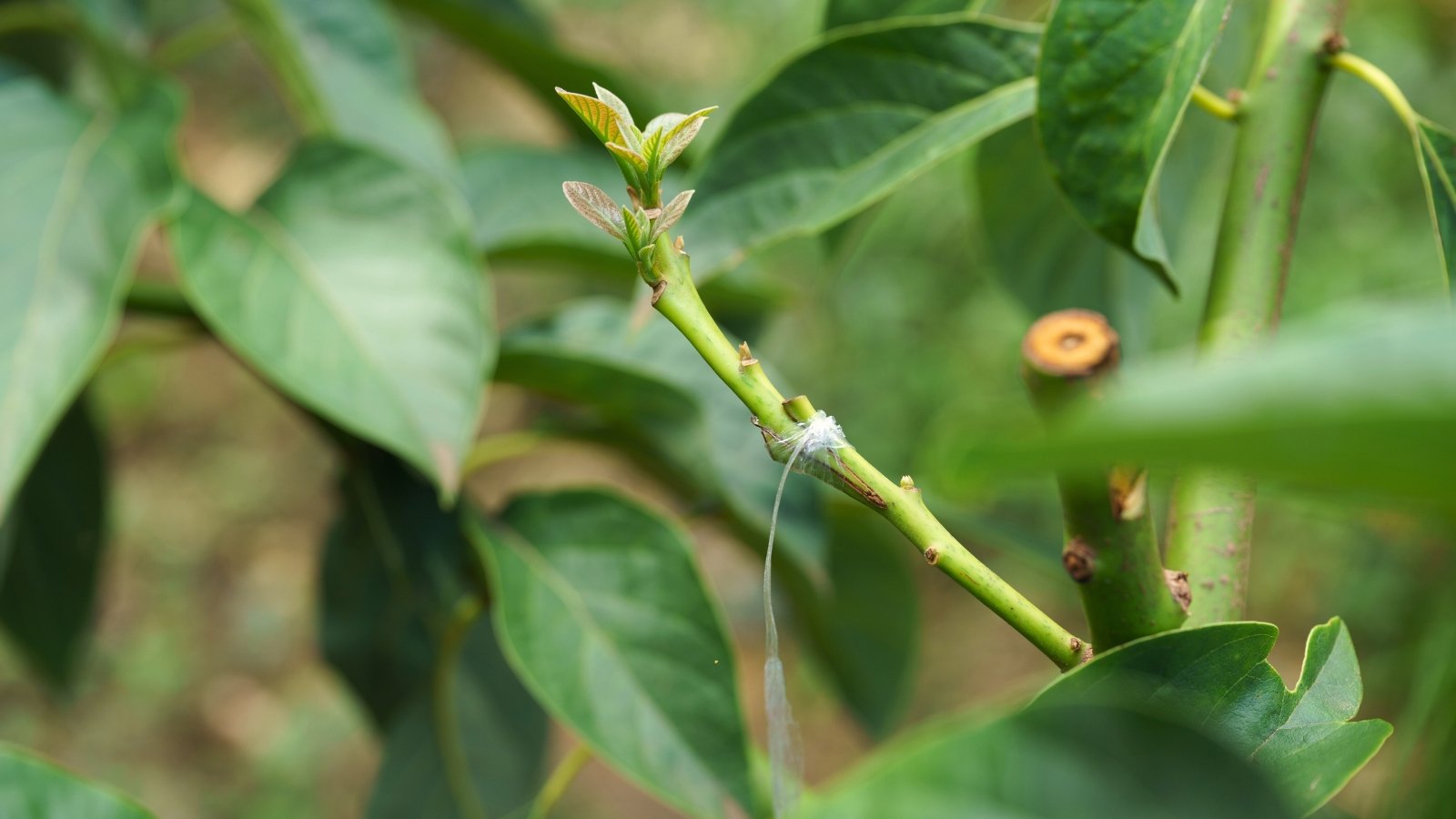 Warmth and indirect light give grafts the best start.
Warmth and indirect light give grafts the best start.Growing a tree from a cutting is typically an undesirable method, as it can be difficult to get your cutting to root. Grafting is more reliable, even though it may seem more complicated, it’s the best solution for home gardeners. You’ll see fruit in two to four years from a grafted tree.
For grafting, you will need a seedling rootstock (6-12 months), a healthy scion from a mature tree, grafting tape, and a sharp blade.
- Grow or acquire a seedling rootstock and a healthy budding stem from a mature tree.
- Cut into the main stem of your rootstock ,making a vertical cut down the center of the stem about one to one and a half inches. Cut the end of the scion into a wedge shape of the same depth.
- Insert the wedge-shaped part of the scion into the split in the stem of the rootstock so that the bark-free portions touch.
- Wrap tightly with grafting tape. You can place a plastic bag over the pot to help hold in moisture.
- Place your grafted tree in a warm, humid environment with bright, indirect light.
- Within two to four weeks, your cutting should begin to show signs of growth. When this happens, remove the plastic.
- Remove any shoots that grow from below the graft as your young tree grows. In about two months, you can remove the grafting tape.
Harvesting and Storage
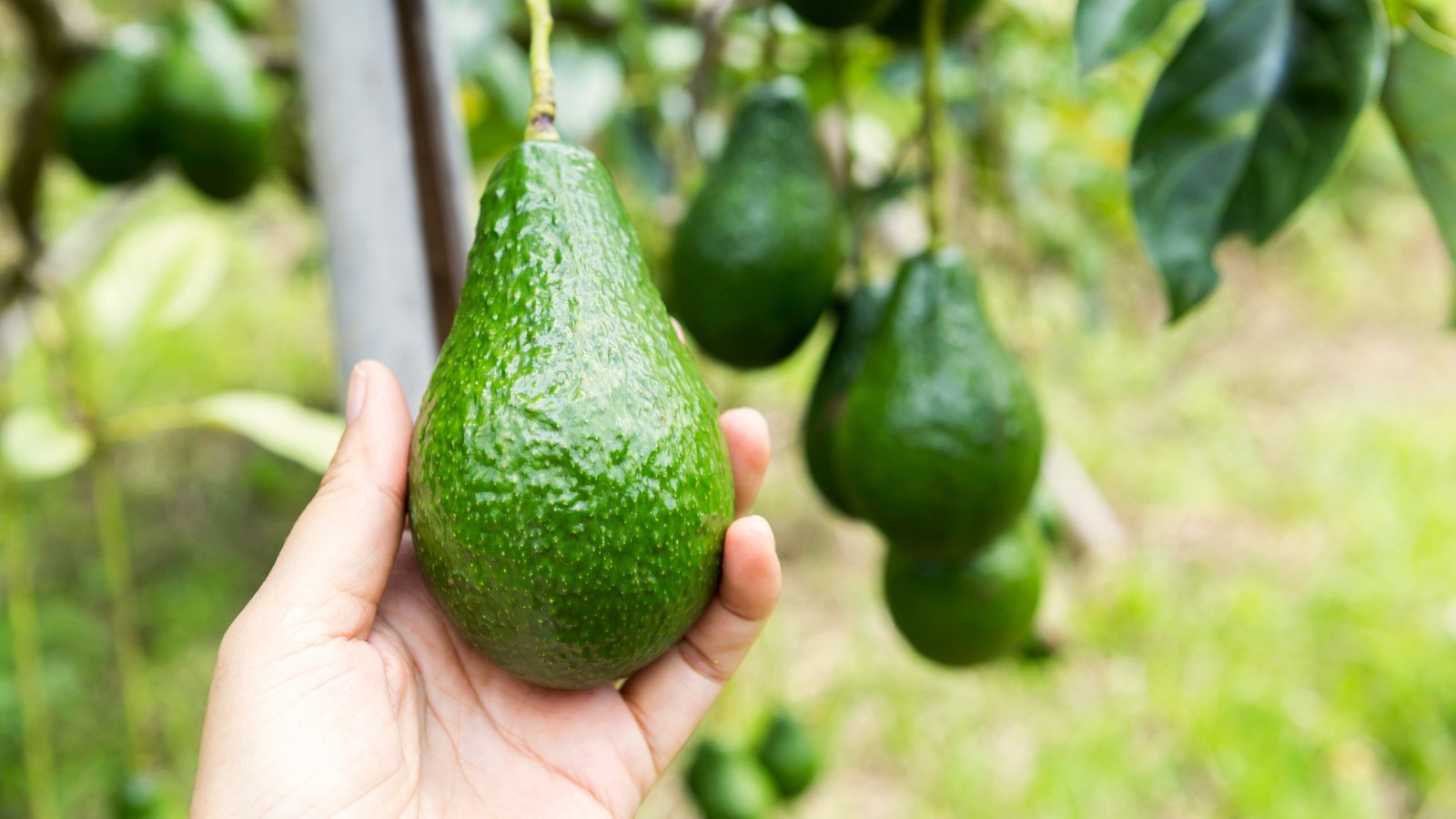 Fruits ripen nicely only after they leave the branch.
Fruits ripen nicely only after they leave the branch.Harvesting avocados is the tricky part because you don’t allow them to ripen on the tree. They will only ripen after you pick them. You’ll know it’s time to harvest when the fruits reach their full size. Different varieties will vary in size, but in general, the skin may change slightly as harvesting time approaches. Fall is the most common harvest time.
When harvesting your fruits, avoid picking them by hand. Use a sharp pair of clippers or shears and cut the stem, leaving a short stub attached. The fruits will keep best on the tree until you’re ready to use them. They will ripen quickly once you harvest them. They ripen in one to two weeks after removing them from the tree.
Common Problems
Avocado trees are fairly tough and don’t often suffer from pests or diseases, but it’s not unheard of. In humid conditions or in poorly draining soil, they are more susceptible to disease.
Pests
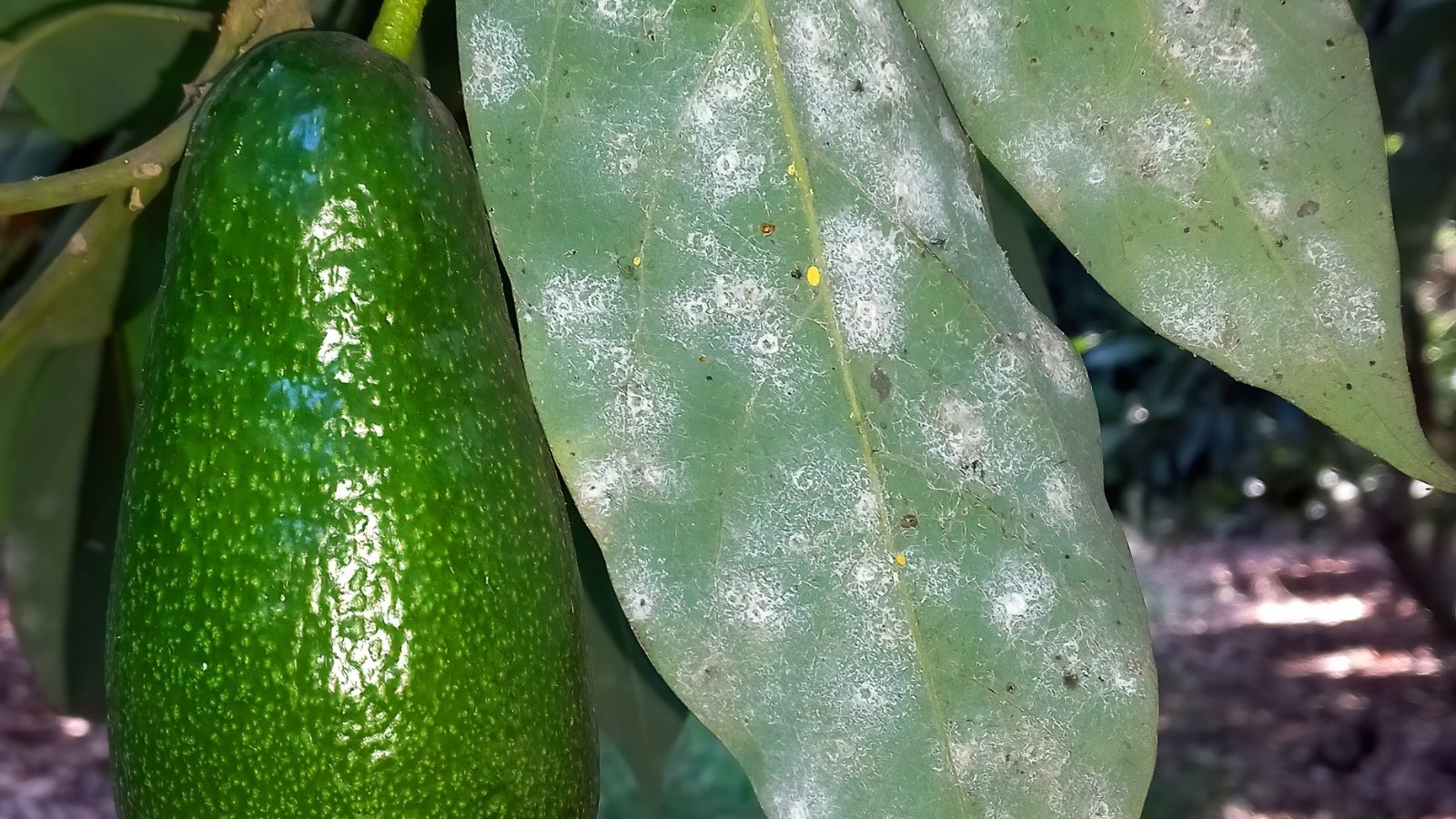 Tiny whiteflies buzz when leaves get disturbed nearby.
Tiny whiteflies buzz when leaves get disturbed nearby.Whiteflies are the most common indoor pests affecting avocados. You’ll know they are there as any time you disrupt the foliage, they will fly around. Scale insects and mealybugs both weaken plants and leave behind a sticky mess that attracts sooty mold.
Thrips cause scarring on the fruit, so they are one of the more serious pests to deal with. Persea mites defoliate, leaving your tree weak and vulnerable. Make sure to rinse your leaves now and then to wash away any insects that may be present. Insecticidal soaps and neem oil are your best and safest defense against most pests if water sprays aren’t working.
Diseases
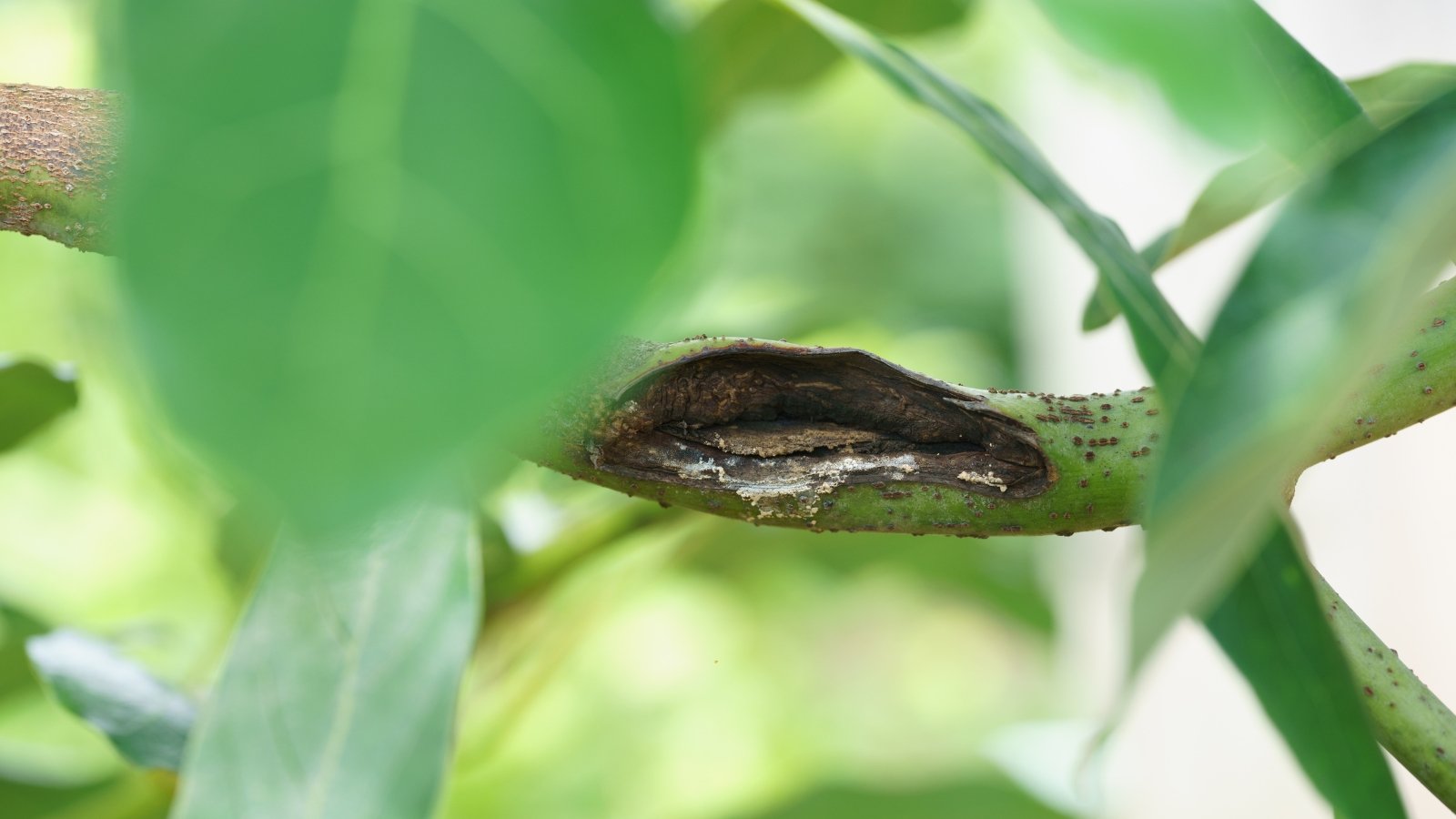 Good airflow and light keep fungal troubles at bay.
Good airflow and light keep fungal troubles at bay.Most of the problematic diseases are fungal, so you can control them with proper care. Watering and pruning are the most important factors. Keeping the crown of the tree open and thinned out will help maintain light and air circulation, which both combat fungus.
Cankers can be a problem and are the result of physical damage. Sunblotch is another issue that manifests as white or yellow streaks on the stems and deformed fruits. Sunblotch is viral, and there is no cure. It spreads by grafting, so make sure to get your scion or tree from a reliable source.
Frequently Asked Questions
Avocados are mildly toxic to dogs and cats, and highly toxic to birds and horses.
In cold climates, you will need to overwinter your tree indoors.
The most common reason for the leaves to wilt is a lack of moisture in the soil or the air.


 1 month ago
25
1 month ago
25





















 English (US) ·
English (US) ·  French (CA) ·
French (CA) ·